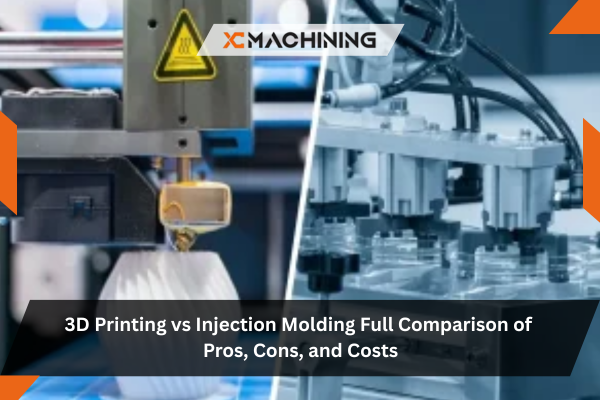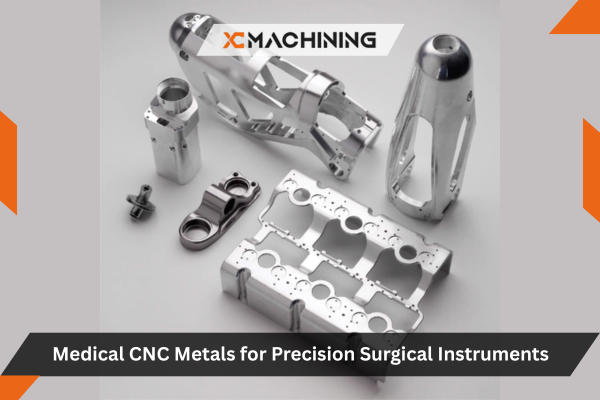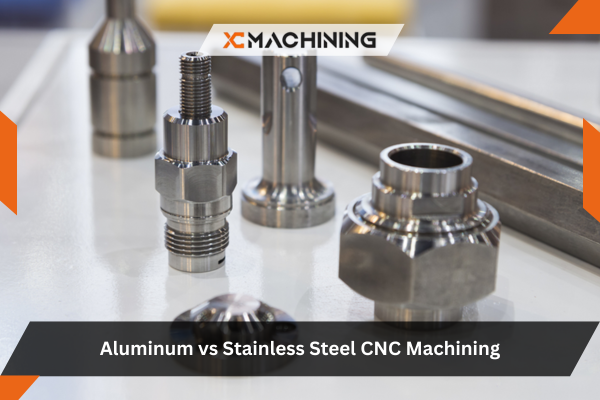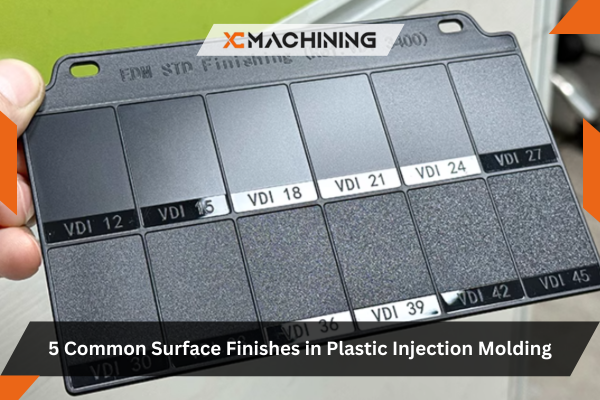In the evolving world of manufacturing, two technologies stand out: 3D printing vs injection molding. Both are powerful and versatile, yet they serve different purposes. For businesses in China, especially those involved in consumer products, electronics, medical devices, or automotive parts, understanding the nuances of these processes is crucial.
Choosing between 3D printing and injection molding isn’t just a technical decision; it’s a strategic one. Your choice will impact production speed, cost-efficiency, design flexibility, and even environmental sustainability. This comprehensive guide breaks down each method, compares their strengths and limitations, and provides actionable insights for manufacturers, engineers, and product developers.
Inhaltsübersicht
Was ist 3D-Druck?
Process Overview
3D-Druck, or additive manufacturing, is a process that builds three-dimensional objects by layering material according to a digital model. Unlike traditional methods that subtract material (like CNC machining) or require molds (like injection molding), 3D printing adds material only where needed. This makes it highly efficient for prototyping, small-batch runs, and design validation.
Common Methods
- FDM (Fused Deposition Modeling): Melts plastic filament and deposits it layer by layer. It’s cost-effective and ideal for basic functional parts.
- SLA (Stereolithography): Uses a UV laser to cure liquid resin. It delivers high-resolution prints and is popular for detailed prototypes and models.
- SLS (Selective Laser Sintering): Uses a laser to fuse powdered materials like nylon. Offers strong, functional parts with more design freedom.
Typische Anwendungen
3D printing is widely used in:
- Rapid Prototyping: Create design iterations quickly and affordably.
- Customized Products: Ideal for dental implants, prosthetics, or consumer goods.
- Low-Volume Manufacturing: Short runs of parts without tooling investment.
3D printing for prototyping is particularly useful for startups and design teams in China looking to accelerate product development and reduce time-to-market. China’s innovation hubs like Shenzhen often leverage 3D printing to iterate quickly, validate concepts, and shorten the product development cycle.

Was ist Spritzgießen?
Process Overview
Injection molding is a subtractive process where molten plastic is injected into a precisely machined metal mold. Once cooled, the mold opens and ejects a finished part. This technique is optimized for mass production where thousands—or even millions—of identical parts are required.
Typical Production Volumes
Injection molding is cost-effective for high volumes due to its low per-unit cost. While the initial investment is high because of mold creation, that cost gets distributed over large batches, significantly reducing the price per part.
Use Cases
Common applications include:
- Unterhaltungselektronik: Plastic casings, buttons, and internal components.
- Medizinische Ausrüstung: Syringes, housing units, and high-precision parts.
- Automobilindustrie: High-strength interior and exterior plastic parts.
Injection molding for mass production remains the standard in high-output manufacturing environments like those in Guangzhou and Dongguan, where efficiency and consistency are critical to success.
Factories in these regions rely heavily on injection molding for reliable, repeatable production.
Side-by-Side Comparison Table
| Faktor | 3D-Druck | Spritzgießen |
| Anfängliche Kosten | Niedrig | High (tooling) |
| Per-Unit Cost | Hoch | Low (at scale) |
| Geschwindigkeit | Fast for prototyping | Fast for production |
| Volume Suitability | Low volumes | High volumes |
| Flexibilität bei der Gestaltung | Sehr hoch | Mäßig |
| Auswahl des Materials | Wide but limited strength | Broad thermoplastics |
| Toleranzen | Less precise | Very tight tolerances |
| Nachhaltigkeit | Less waste per piece | Recyclable waste streams |
This table highlights the fundamental differences between the two technologies. While 3D printing shines in flexibility and speed for one-off parts, injection molding dominates when it comes to precision and scale.
Cost Comparison 3D Printing vs Injection Molding
Tooling Costs Explained
3D printing does not require molds or special fixtures. You only need a CAD model and the printer. This saves thousands of dollars during development. In contrast, injection molding requires precise metal molds, which can cost tens of thousands of yuan.
Per-Unit Cost at Different Volumes
3D printing maintains relatively consistent costs regardless of quantity. Injection molding, while costly at the start, becomes exponentially cheaper as production volumes increase.
Break-even Point: Typically, around 500–1,000 units is the point where injection molding starts becoming more cost-effective than 3D printing.
Typical Example Scenarios
- A startup printing 50 units of a new product: 3D printing wins.
- A manufacturer producing 50,000 parts: Injection molding saves money over time.
Advantages and Disadvantages of 3D Printing
In this section, we’ll cover the main 3D-Druck vs. Spritzgießen pros and cons, beginning with additive manufacturing.
Profis
- No Tooling Costs: Digital files go directly to production.
- Design Freedom: Complex internal geometries, undercuts, and lightweight structures are easily created.
- Quick Iterations: Great for improving and testing designs.
Nachteile
- Slower at Scale: Not suitable for mass production due to build times.
- Material Limitations: Most printable plastics are not as durable as molded materials.
- Oberfläche: May require post-processing to smooth layers.
Pros and Cons of Injection Molding
Profis
- Economies of Scale: As quantity increases, per-unit cost drops sharply.
- Konsistenz: Uniform parts with minimal variation.
- Material Variety: Strong thermoplastics, elastomers, and composites are available.
Nachteile
- High Upfront Cost: Molds require time and capital to produce.
- Design Limitations: Complex geometries increase tooling costs.
- Lead Times: Weeks may be needed before the first part is ready.
Design Considerations: What Works Best?
Design plays a pivotal role in choosing the right manufacturing process. Here’s what to consider:
- Wall Thickness: Injection molding needs uniform walls to avoid sink marks or voids. 3D printing allows more variation.
- Tolerances: Injection molding offers superior precision, essential for interlocking parts.
- Surface Finishes: Molding provides smoother finishes out of the gate. 3D prints may need sanding or coating.
- Part Complexity: Complex internal channels and undercuts are easier to print than to mold.
Sustainability and Environmental Impact
Energy Use Comparison
- 3D printing generally consumes more energy per part due to longer build times.
- Injection molding has high initial energy use but is efficient over long production runs.
Material Waste and Recyclability
- 3D Printing: The Additive nature means less scrap.
- Spritzgießen: Generates waste through runners and sprues but can use recycled thermoplastics.
Eco-Friendly Options
- 3D Printing: Uses biodegradable materials like PLA.
- Spritzgießen: Can use recycled plastics or bio-resins.
How Startups and Small Businesses Can Choose
When to Use 3D Printing vs Injection Molding
3D printing is perfect for startups that need:
- Rapid feedback
- No mold investment
- Quick design iterations
Once demand grows or investor funding becomes available, transitioning to injection molding reduces production costs per unit.
Key Considerations:
- Haushalt: Limited funds? Start with 3D printing.
- Timeline: Need speed? Print now, mold later.
- Volume: Less than 500? Stick with 3D printing.

Real-World Examples and Use Cases
- Konsumgüter: Custom gadgets prototyped with 3D printing; high-volume units molded.
- Medizinisch: Personalized surgical tools printed on-demand; syringes mass-produced via molding.
- Automobilindustrie: Rapid tooling with 3D printing; dashboards, grilles molded.
- Shenzhen Startup: A wearable tech firm created 10 design versions in a week using 3D printing, then shifted to injection molding for 20,000-unit production.
How to Decide Which Process is Right for You
- What volume do you need?
- What tolerances are required?
- Do you plan to iterate designs?
- What is your budget?
- What materials are essential?
Use this list to align your production method with your business goals.
Häufig gestellte Fragen
What is cheaper for low volumes?
3D printing is more cost-effective under 500–1,000 units due to zero tooling costs.
Can you combine 3D printing and injection molding?
Yes. Use 3D printing for mold prototyping or bridge production before full-scale tooling.
How accurate are 3D-printed parts vs molded parts?
Injection-molded parts are typically more precise and consistent.
Is injection molding always better for large runs?
Yes. Once the mold is made, it’s the most cost-efficient method for thousands of units.
Schlussfolgerung
Both 3D printing and injection molding offer powerful advantages. 3D printing provides unmatched flexibility and low-cost entry, ideal for testing and custom parts. Injection molding delivers efficiency and precision for large-scale production.
For companies in China looking to stay competitive, the ideal solution may involve both methods. XC-Bearbeitung helps businesses navigate these choices with expert support and precision results.





